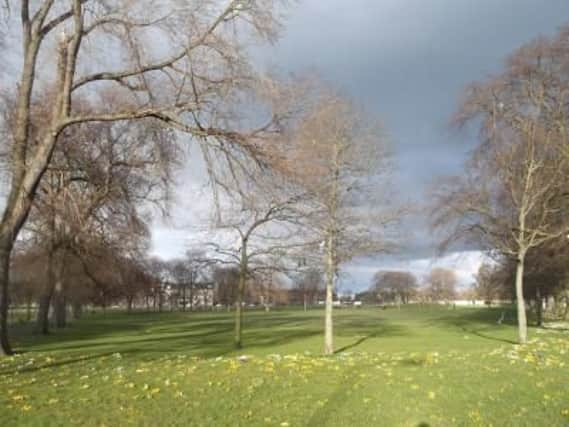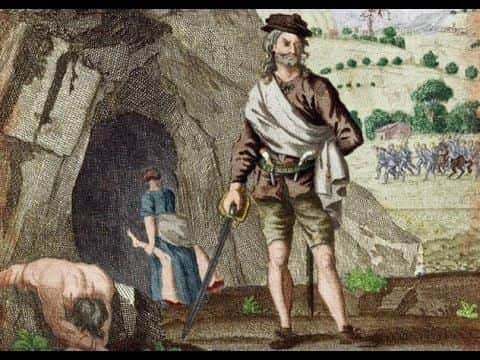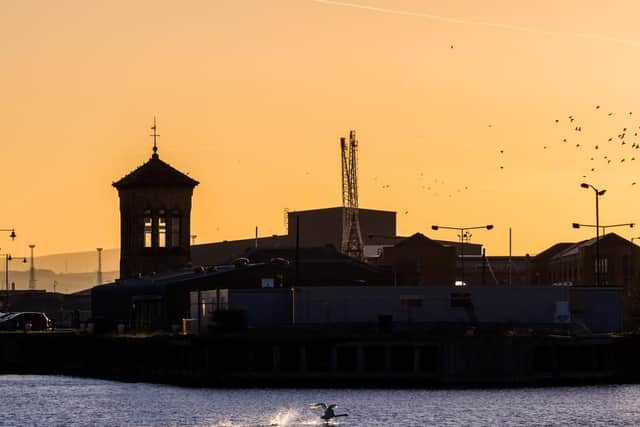8 disturbing facts about Leith that will send shivers down your spine


Here we uncover some of the weirdest and most disturbing things you might not know about Edinburgh’s port district.
The Leith Links cover the mass graves of plague victims


Throughout the Middle Ages, cases of Bubonic Plague arose in cities across Europe, often spawning full-scale epidemics.
Advertisement
Hide AdAdvertisement
Hide AdThe Edinburgh Plague of 1645 was absolutely devastating, estimated to have killed as much as half of the city's population.
And an even higher proportion of Leith’s population were killed by the disease.
As a port town, Leith was especially vulnerable. The ships that arrived each day from across the continent brought with them rats which harboured plague-carrying ticks.


The toll rose so quickly that mass graves had to be dug to dispose of the bodies before the infection could spread. As a result, an unknown number of plague victims are buried beneath Leith Links.
Bodies were found next to a primary school
Advertisement
Hide AdAdvertisement
Hide AdTo add an extra morbid detail to the story – the mass grave of Leith’s plague victims were only discovered during works on the playground of St Mary's RC Primary School.
When builders were digging the foundations for a new classroom in 2016, they were shocked to uncover a human skeleton.
The remains were found to be from the 17th century and are believed to be those of a plague victim. After the discovery was made, the school's headteacher said: “The school is very excited about the educational opportunities that the archaeological work on site may present.”
A woman was executed for trying to curse the king
Witch-burning used to be all the rage in Scotland, so much so that there are five different chapters in our history known as the Great Scottish Witch Hunt.
Advertisement
Hide AdAdvertisement
Hide AdIn 1590 – during the original hunt – King James VI was delayed in his return from Copenhagen by an unexpected storm.
Upon returning home, the King's tribunal found a woman named Angela Sampson guilty of having hurled cats into the sea near Leith and melting wax effigies in an attempt to sink the king's ship and claim his life.
She was executed via “thrawing” - an especially grisly method in which a rope was tied around the victim's head and slowly tightened until the skull was crushed.
Sawney Bean may have died in Leith
Sawney Bean and his clan are known to most as the inspiration for horror maestro Wes Craven's gory 2006 film The Hills Have Eyes.
Advertisement
Hide AdAdvertisement
Hide AdThe 45-strong inbred family of the Scottish legend was said to have hidden out in caves and killed over a thousand people.
Stories vary as to how the clan met their demise, but the most popular version holds that they were captured and brought to Leith, where they were summarily executed.
By those accounts, Sawney met his death while yelling “It isn't over, it will never be over”.
St Thomas' church was paid for by slavery
The main benefactor of St Thomas' church, built in 1840, was Sir John Gladstone.
Advertisement
Hide AdAdvertisement
Hide AdGladstone is mostly known as the father of William Edwart Gladstone, who served four terms as British Prime Minister between 1868 and 1894.
Sir John Gladstone worked as a merchant who “owned” over 2,000 slaves.
He was also one of the 46,000 British slave owners who claimed compensation from the government when their slaves were freed by The Slavery Abolition Act of 1833.
He was awarded the equivalent of £80 million, the highest recorded payout.
Advertisement
Hide AdAdvertisement
Hide AdToday, St Thomas' acts as a grim reminder of Scotland's deep-rooted links to slavery.
The Tolbooth Wynd is haunted by a ghostly coachman
According to local legends, the residents of Tolbooth Wynd were once terrorised by a ghostly coach driven by a headless rider.
Known as the “Twelve o'clock Coachman”, he would appear on the hour each night and hurtle through the street.
He was described as a tall, gaunt figure without a head, leading a team of horses who were also headless.Some accounts also have him accompanied by a female passenger.
Advertisement
Hide AdAdvertisement
Hide AdNothing more is known of who he was or how he came to be tearing down that road without a head.
Pirates were executed on Leith Sands
Decried as the scourge of the civilised world in the 17th and 18th centuries, pirates were public enemy number one and their executions were the cause of great excitement amongst local people.
Leith's port provided a vital pathway for pirates who had made their big score and were looking to retire.
They would arrive in Leith before using their newfound wealth to take on the identities of gentlemen, then set sail for London.
Advertisement
Hide AdAdvertisement
Hide AdThose who were caught were hung over the water by Leith Sands – their bodies left to serve as a warning to other pirates.
Leith's disused train station inspired Trainspotting
Irvine Welsh's grimy novel and its film adaptation are probably the most famous depictions of Edinburgh in mainstream culture.
Trainspotting tells the story of a group of guys in a then run-down part of 1980s Leith, who turn to petty crime and hard drugs to fend off the bleakness of their surroundings.
It takes its title from an incident in the book in which a character is reunited with his estranged father in Leith Central train station. Drunk out of his mind, the man asks them whether they are trainspotting.